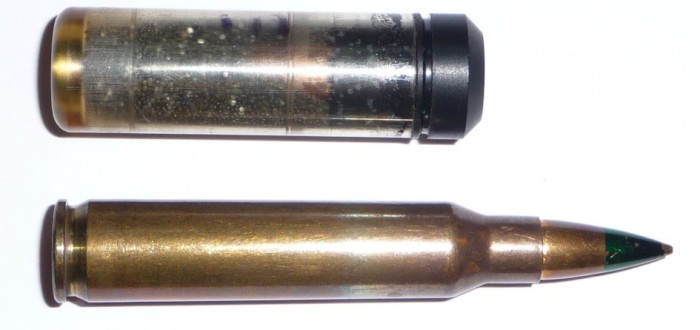Emergent ammunition technologies are likely to prove key in future firearms designs. Emergent cartridge case technologies, the rise of the ‘general-purpose’ calibre, and other nascent technologies will affect the way in which firearms are designed, produced, managed in service, tactically employed, maintained, and sustained. Chambering the Next Round: Emergent Small-calibre Cartridge Technologies, a new Working Paper authored by ARES Director N.R. Jenzen-Jones and published by the Small Arms Survey, explores the significant developments in cartridge technology over the past decade.
Many of the emergent technologies discussed in the report are, or will be, compatible with one another, offering advanced synergies for the ammunition of tomorrow. The advent of new technologies that are applicable to small-calibre ammunition presents several policy implications and may contribute to proliferation concerns. The report considers the likely and current customers for these technologies, and examines how a potential surplus of current-standard ammunition created by the adoption of such technologies may contribute to proliferation concerns. Finally, an assessment of how these technologies will affect current and future marking, record-keeping, and tracing procedures, and what law enforcement challenges are posed by their adoption, will be of value to stakeholders. As the report notes:
Combinations of the technologies discussed in this report, and others, may allow for:
• increased standardization of calibres within the infantry squad;
• a reduced logistics burden on the supply chain;
• reduced overall economic costs;
• reduced ammunition weight and volume;
• improved hit probability;
• improved general performance and function; and
• the development of cartridges for special applications.
You can read the report in its entirety here.
Remember, all arms and munitions are dangerous. Treat all firearms as if they are loaded, and all munitions as if they are live, until you have personally confirmed otherwise. If you do not have specialist knowledge, never assume that arms or munitions are safe to handle until they have been inspected by a subject matter specialist. You should not approach, handle, move, operate, or modify arms and munitions unless explicitly trained to do so. If you encounter any unexploded ordnance (UXO) or explosive remnants of war (ERW), always remember the ‘ARMS’ acronym:
AVOID the area
RECORD all relevant information
MARK the area to warn others
SEEK assistance from the relevant authorities


